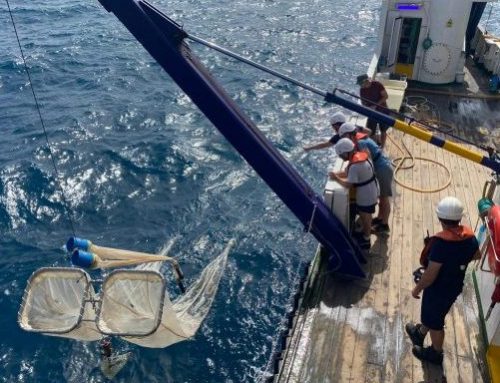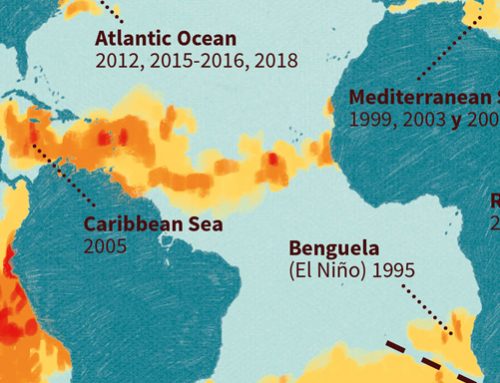An ocean without tuna: what would happen if Bluefin tuna went extinct?
________________
Author: Hannah Bonner
What happens when a predator disappears from a marine ecosystem? The population of Atlantic bluefin tuna (Thunnus thynnus), that breed in the Mediterranean came very close to collapsing in the early 2000’s due to overfishing. Luckily the population has since recovered thanks to a combination of strict fishing regulations and favorable physical conditions in subsequent years. But what if it had not? What if the Atlantic bluefin tuna had gone extinct, or had reached such low levels as to become ecologically and commercially insignificant? A high school student asked Patricia Reglero of Planet Tuna this question, and answering it turned out to be much more difficult than we expected. Why? Basically, because ecosystems are amazingly complex and all the parts are interdependent, so we can’t say “if species X goes missing, this is what the consequences will be”
Compounding this difficulty is the fact that here were no studies in place at the time of the Bluefin tuna crisis to measure its ecological impact, but we can get some sense of the potential consequences from studies of other species and ecosystems.
Fewer predators, more prey… but not always
If you think about the effects of removing a predator, it’s easy to imagine that its favorite prey — fish and squid in the case of the Bluefin — will become more common. And sometimes, this is indeed what happens.
A well-known case is that of the Northwest Atlantic cod, which was once extremely abundant and the economic mainstay of much of coastal New England and Atlantic Canada for centuries. When industrial fishing methods (mainly bottom trawling) were introduced in the 1960’s, they began to take vastly more cod than traditional fishing methods ever did, and by 1991 the fishermen’s nets were coming up practically empty. The cod’s favored prey species were snow crabs, shrimp and small fish, and these did indeed become much more abundant. Seal populations increased, probably taking advantage of the more abundant prey, and various other players in the ecosystem were affected as well. This top-down domino effect is known as a trophic cascade.
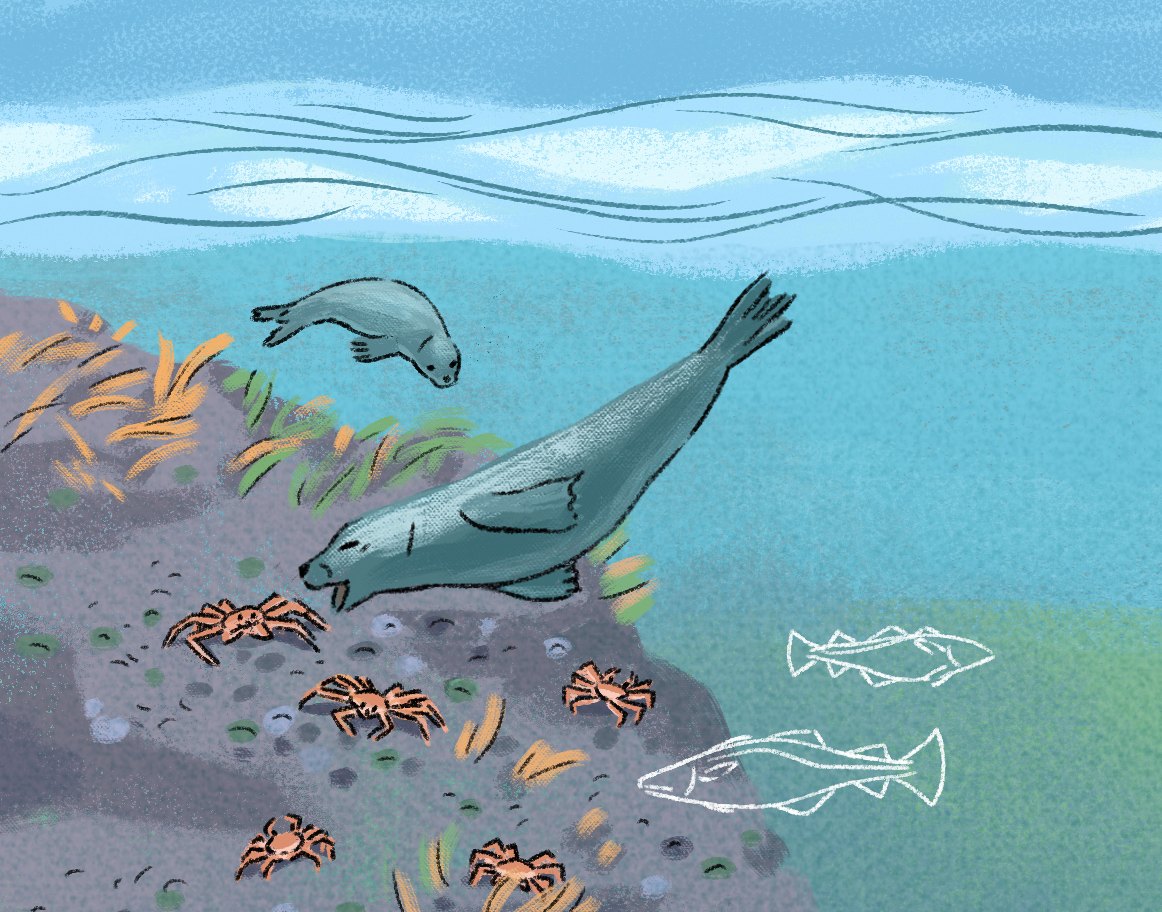
But not all cases are equally predictable. A vivid example of this unpredictability comes not from a fish species, but from a mammal-crustacean trophic linkage. By the 1980’s, whaling had driven most whale populations to the brink of extinction. In the Southern Ocean, baleen whales feed on enormous quantities of krill, a small shrimp-like crustacean that in turn feeds on phytoplankton. Phytoplankton is the photosynthetic component of plankton and the base of the marine food web, and it only inhabits the sunlit upper layers of the water. It could be expected that as whales dwindled, the populations of krill would increase in numbers. Surprisingly, it was the other way around: krill numbers dropped. As it turns out, whales play an important role in the cycling of nutrients. They dive, feed, and since they must come to the surface to breathe, they often release their fecal matter — their poop, in other words — near the surface, where it serves as fertilizer for the phytoplankton. And more phytoplankton means more food for the krill. Without the whales acting as a nutrient pump, the krill were going hungry.
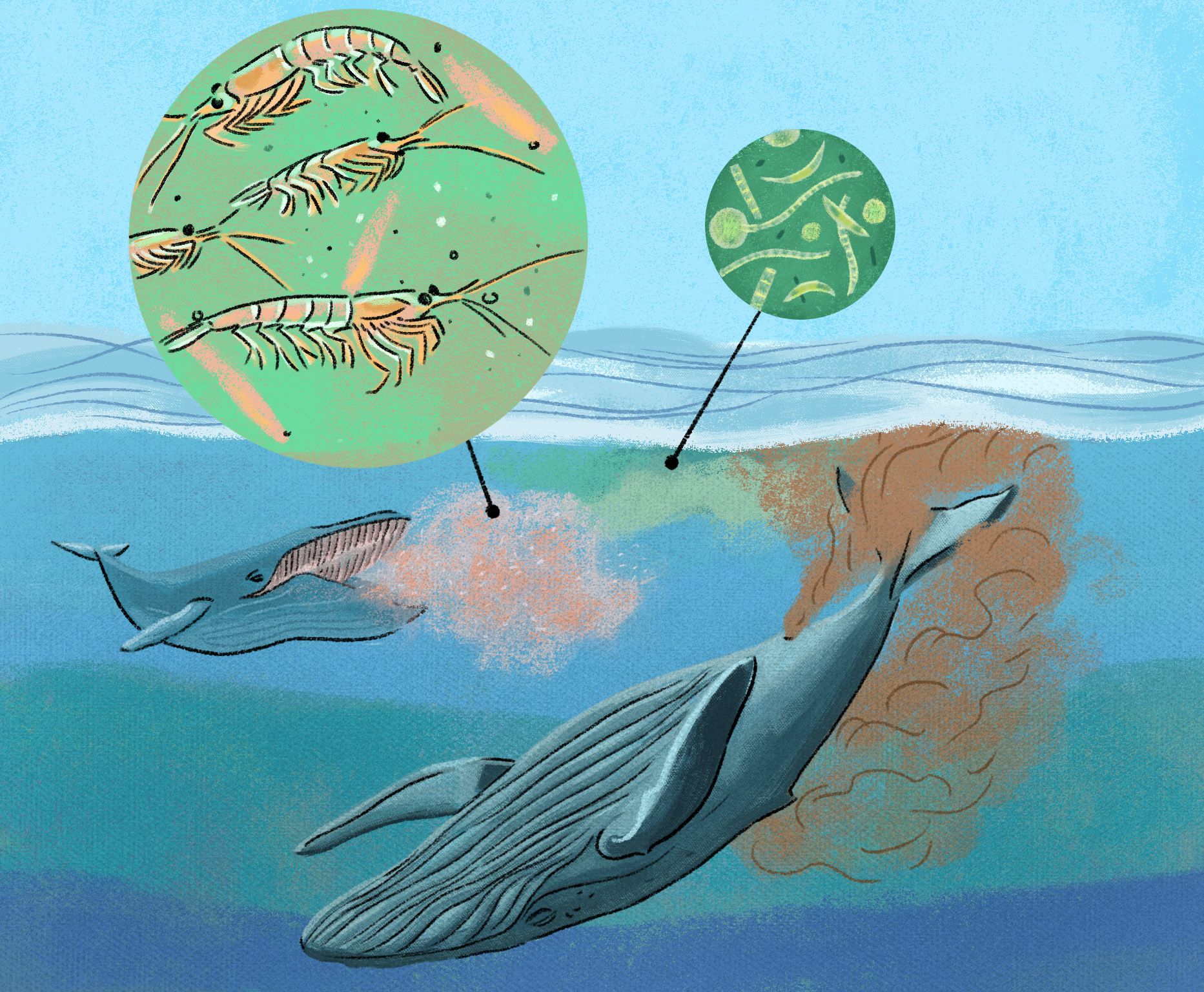
Whales also move nutrients horizontally. When they migrate from their feeding grounds to their calving grounds, they stop eating, but still excrete urine that is essentially a rain of compounds that they have brought with them in their fat reserves from the richer feeding areas.
And what about tuna? Although there is still a lot to be studied in the case of tuna, it stands to reason that they too act as nutrient pumps. An individual tuna is vastly smaller that a whale, but since tuna, and especially the tropical tuna, form enormous schools, their total biomass is huge. Bigeye tuna (Thunnus obesus) perform daily vertical migrations, swimming down to a depth of around 400 meters during the day to feed in the so-called deep scattering layer or DSL, where prey are abundant. They then rise to shallower waters at night, with the consequent release of urine and feces near the surface where it becomes available to the plankton. Although this has not yet been studied, it’s most likely that they too act as a nutrient pump. See the Planet Tuna video about tuna and depth.
Fish as nutrient stores
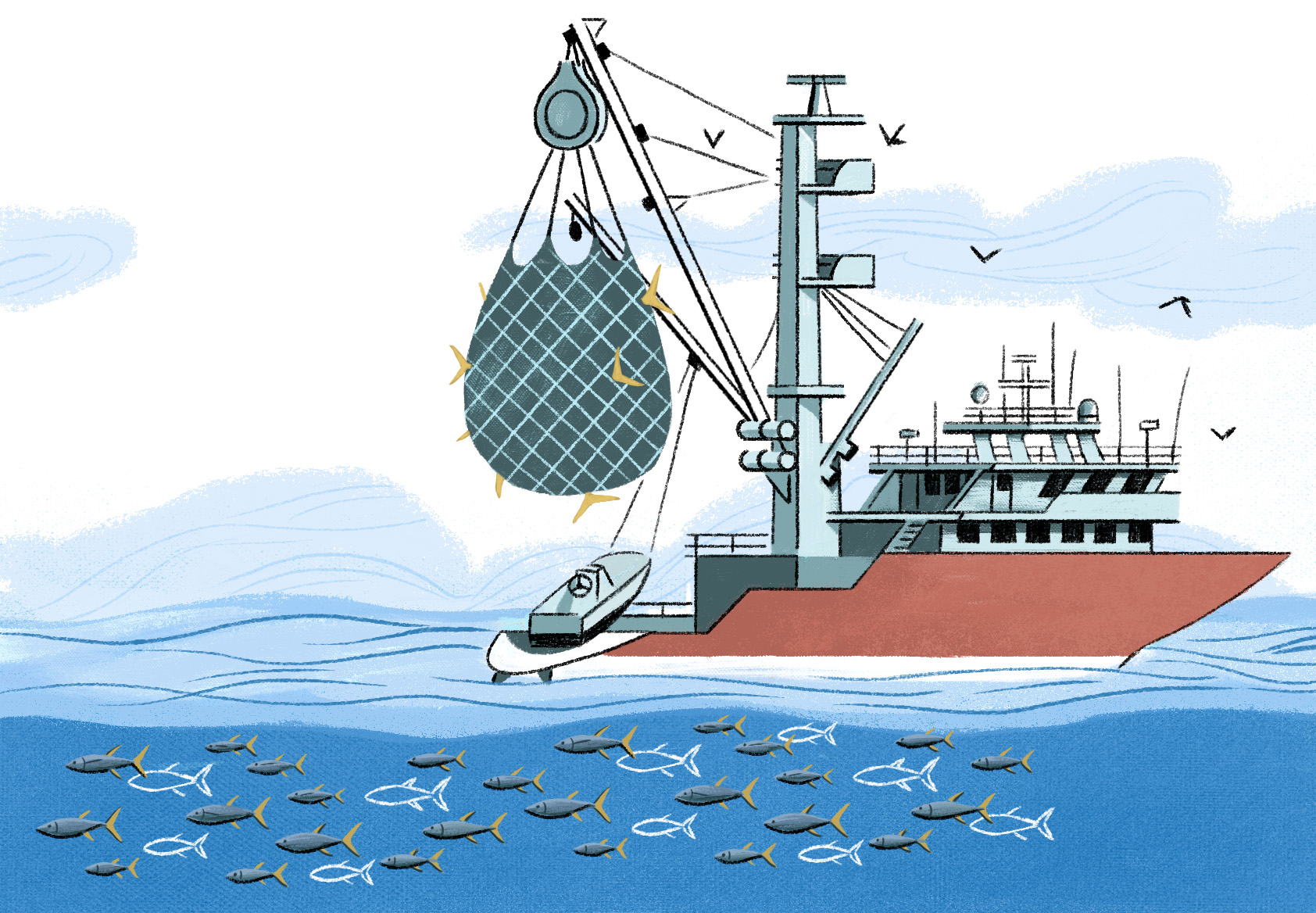
Fish also act as a store of nutrients such as iron in their flesh. When enormous quantities of fish are extracted from the oceans as is the case with the tropical tunas, there is a loss of nutrients as these fish are removed and taken onto land to end up as human food. This nutrient drainage can be significant, especially in areas where iron is scarce, since iron is one of the nutrients that phytoplankton need in order to thrive.
Mixing of ocean layers
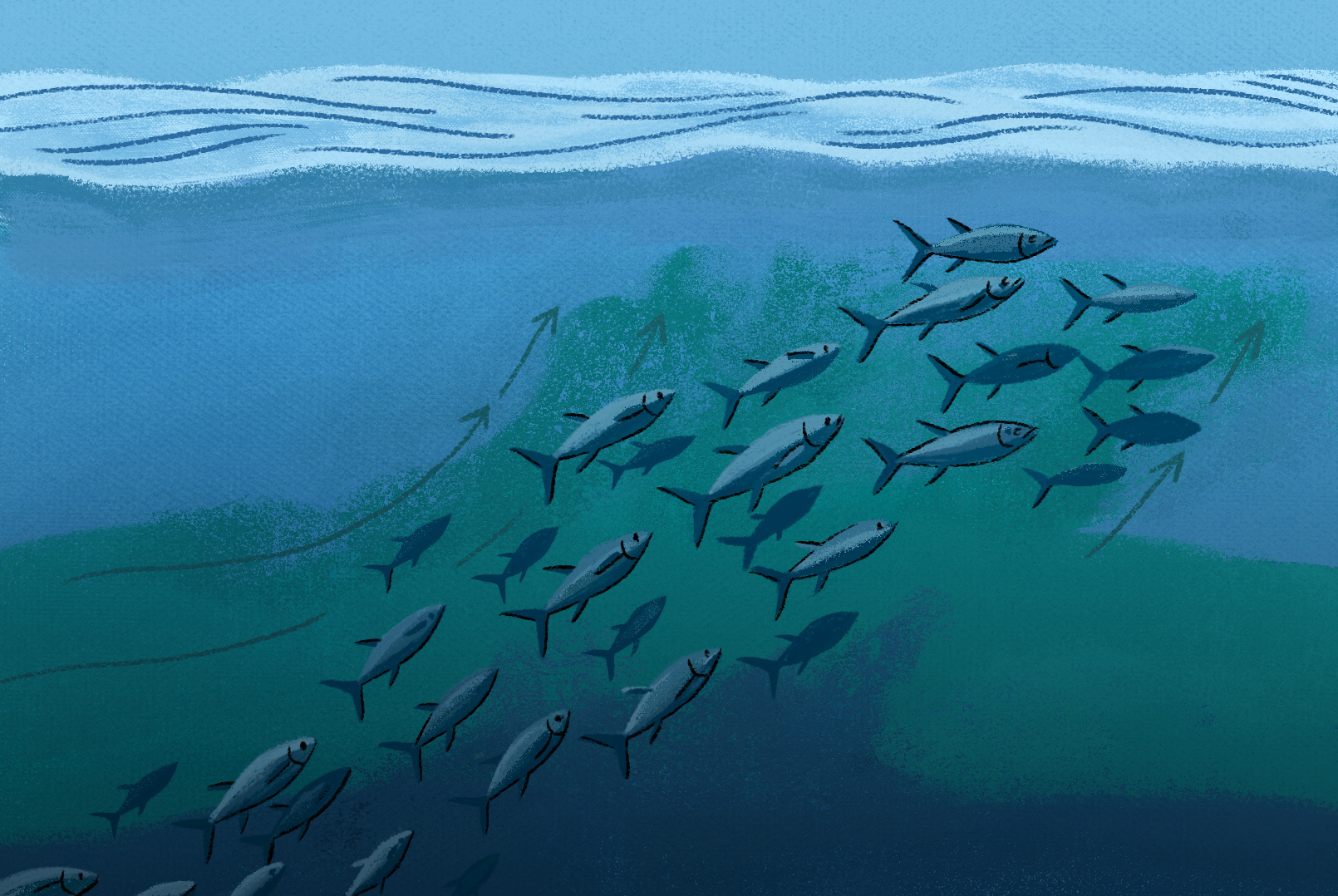
Ocean waters are divided into layers, mostly determined by gradients of temperature and by salinity. Mixing water between layers is another important ecological function, since it brings nutrients that have accumulated in one layer to other layers where they may not be as plentiful. Vertically migrating whales and also fish — and even in some cases krill, since there are so many of them — can result in enough water movement to cause layer mixing. According to one study, an average school of 100 Atlantic bluefin tuna can create vertical eddies over an area of up to 20 km2, helping to mix coastal and continental shelf waters in certain locations.
Impact of early life stages
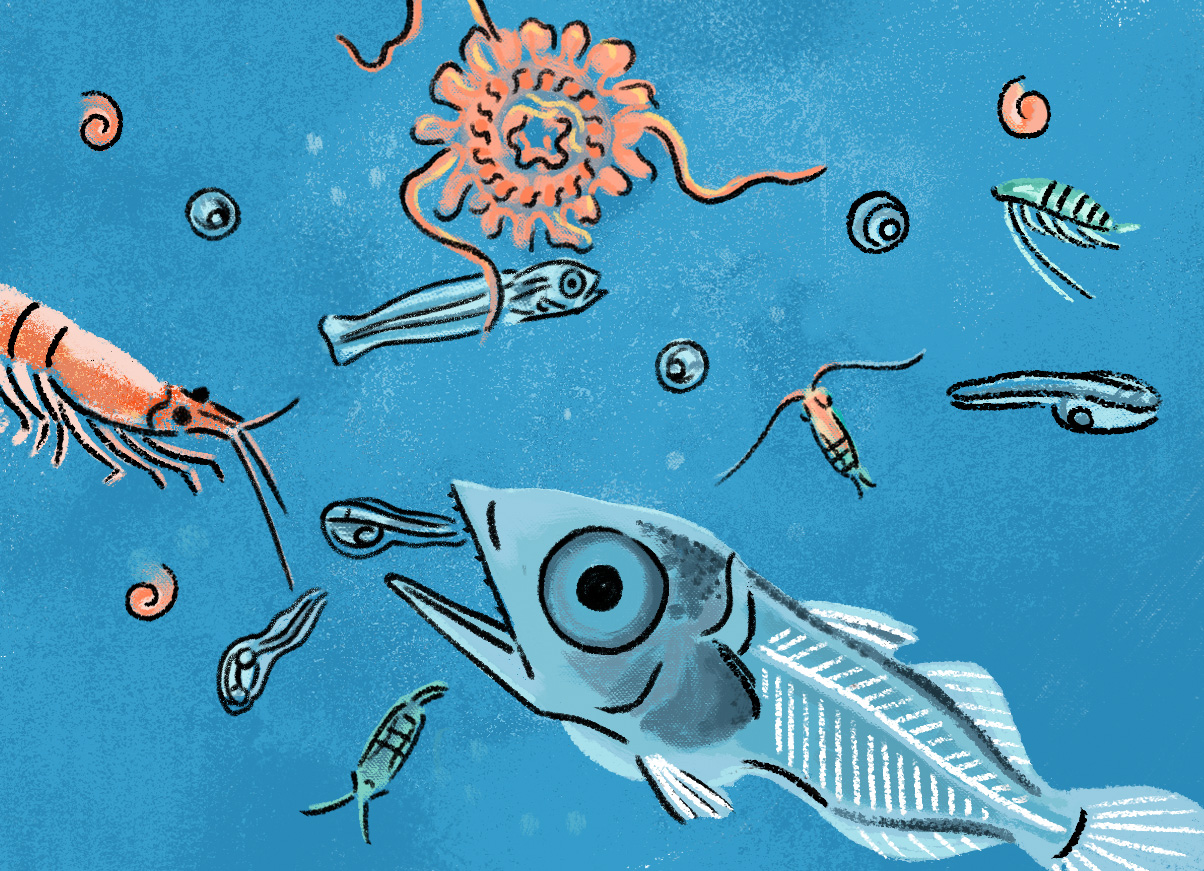
Atlantic bluefin tuna give us insight into an additional ecological consideration: at different life stages, an animal may be either predator or prey. In the case of the bluefin, in the first weeks of its life, as an egg and as a larva, it is a source of food for many tiny predators as well as for filter-feeding fish. As the bluefin larvae grow and become more able to hunt actively, they become predators of smaller tuna larvae, whether of other species, such as albacore (Thunnus alalunga) or smaller individuals of their own species. A study in the Balearic Sea in the Western Mediterranean showed that local populations of albacore fared better when the numbers of Bluefin were low; when the bluefin population began to recover, the numbers of albacore decreased, most probably because of predatory pressure on their larvae by bluefin larvae.
Behavioral changes
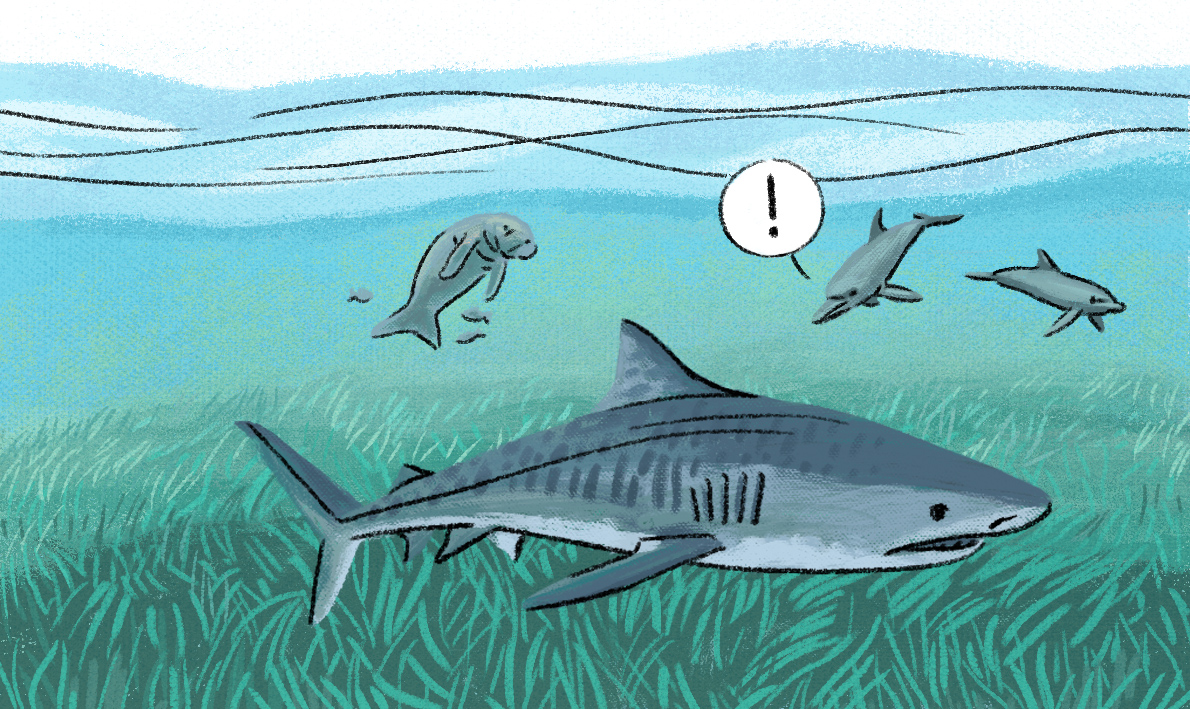
Another effect of predator removal is that it changes the behavior of prey species. In Shark Bay in Australia, tiger sharks are present seasonally in the shallow seagrass beds; when they are present, dolphins, dugongs and cormorants all move to deeper waters to avoid the sharks, even though food is less abundant there, which can affect their health and reproductive rate. This changes the pattern of seagrass grazing, which affects the seagrass itself and the local ecosystem it creates. In this case, the ecosystemic effect is not so much from shark predation as it is from fear of the sharks. Even the vertical migration of many species to deeper waters during the day evolved as a way of avoiding the visually-based predators in upper layers of the ocean that need daylight in order to hunt.
The case of the Atlantic bluefin
As for our iconic and much sought-after Atlantic Bluefin tuna, we have seen that it most likely has nutrient pump functions, and we have seen that it can cause layer mixing. It also stands to reason that its absence would cause trophic cascades, especially as other large predators such as swordfish and sharks have also been overfished, either intentionally or as accidental bycatch, so there are not many candidates to take over their role. We have also seen how its early life stages are a source of food — and of predation — for other species. As adults, Atlantic Bluefin tuna have few enemies, but a substantial number of them are preyed on by orcas in the Strait of Gibraltar during the tuna’s migrations in and out of the Mediterranean. It seems unlikely that the orcas depend on the tunas for their basic food needs, but it appears to be an important seasonal addition to their diet. We can also ask ourselves whether the disappearance of the Atlantic bluefin would have an effect on the behavior of other pelagic species. We can’t say for sure, because studying behavior in open waters is especially difficult, but it is certainly possible.
What we don’t know is just how abundant bluefin were prior to industrial fishing of the stocks. What did the food web in their spawning areas in the Mediterranean look like a hundred years ago, when bluefin were only caught by artisanal means? Are we now studying an already severely altered food web?
The more researchers learn about the profound effects of every part of a food web on the rest (see our video on ocean bacteria’s role, for example), the more obvious it is that overfishing has consequences that reach far beyond simply reducing the numbers of a fishery’s target species.
Those responsible for managing fisheries have already begun to take ecosystem effects into account, with the help of computer models developed for this purpose. Let’s hope that good management of the Atlantic bluefin tuna fisheries results in a stable population, and that we will never have the opportunity to study the consequences of its demise. Better yet, we can wish for a thriving Bluefin tuna population that increases enough to show us what the Mediterranean (and the other areas that it frequents) were like prior to industrial fishing, when giant breeding adults were common. That would be a truly interesting ecological lesson.
Author: Hannah Bonner
Illustrations: Flavia Gargiulo
Scientific advisor: Bruce Robson
Coordination: Patricia Reglero
Sources:
Frank, K. T., Petrie, B., Choi, J. S., & Leggett, W. C. (2005). Trophic cascades in a formerly cod-dominated ecosystem. Science (New York, N.Y.), 308(5728), 1621–1623. https://doi.org/10.1126/science.1113075
Doughty et al. (2015). Global nutrient transport in a world of giants
Proceedings of the National Academy of Sciences Oct 2015, 201502549; DOI:10.1073/pnas.1502549112
Ratnarajah L, Bowie AR, Lannuzel D, Meiners KM, Nicol S (2014) The Biogeochemical Role of Baleen Whales and Krill in Southern Ocean Nutrient Cycling. PLoS ONE 9(12): e114067. doi:10.1371/journal.pone.0114067
Environmental consequences of fishing practices. Online article
Griffiths S, Fuller L (2019) An updated ecosystem model of the eastern tropical Pacific ocean: analysis of ecological indicators and the potential impacts of FAD fishing on ecosystem dynamics. In: IATTC – 10th Meeting of the Scientific Advisory Committee. IATTC-SAC-10-15, San Diego, California
Heithaus, M. (2008). Predicting ecological consequences of marine top predator declines. Trends in Ecology & Evolution.
Le Mézo, Priscilla & Guiet, Jérôme & Scherrer, Kim & Bianchi, Daniele & Galbraith, Eric. (2022). Global nutrient cycling by commercially targeted marine fish. Biogeosciences. 19. 2537-2555. 10.5194/bg-19-2537-2022.
N. Daan et al. (1985). Predation by North Sea Herring Clupea harengus on Eggs of Plaice Pleuronectes platessa and Cod Gadus morhua. Article in Transactions of the American Fisheries Society · July 1985 DOI: 10.1577/1548-8659(1985)114<499:PBNSHC>2.0.CO;2
Huntley, Mark & Zhou, Meng. (2004). Influence of animals on turbulence in the sea. Marine Ecology-progress Series – MAR ECOL-PROGR SER. 273. 65-79. 10.3354/meps273065.



